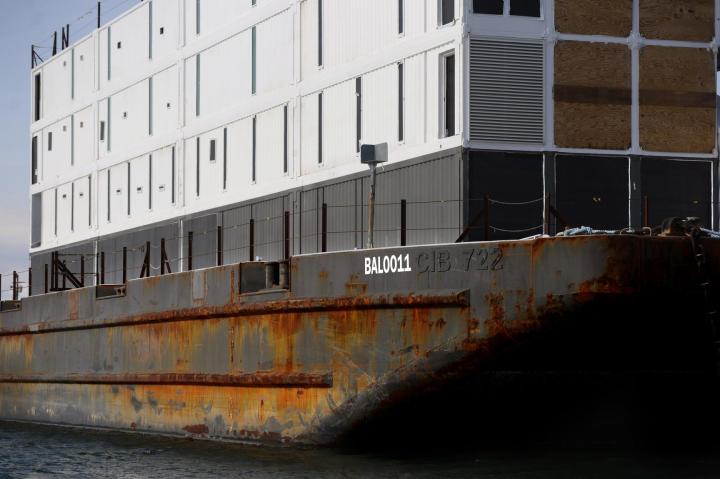
After weeks of keeping an anxious public (or, at least, anxious tech journalists) in the dark, Google has finally confirmed that it is behind the so-called “mystery barges” that are anchored in the waters off California and Maine. A Google spokesperson tells TechCrunch that the barge-buildings will likely be used as an “interactive space” to show off the company’s tech, like Google Glass.
“Google Barge … A floating data center? A wild party boat? A barge housing the last remaining dinosaur? Sadly, none of the above,” said the Google spokesperson. “Although it’s still early days and things may change, we’re exploring using the barge as an interactive space where people can learn about new technology.”
As odd as it seems to us that Google would go to the trouble of building four-story structures on barges without really knowing what the heck they’ll be used for, the spokesperson’s statement essentially confirms most of what we’ve heard about these enigmatic structures.
Last Week, CBS San Francisco reported that the barges would be used as “dazzling showrooms” with a private “party deck.” The same day, the Los Angeles Times reported that the terms of the barges’ lease state that the vessels could be used for “fabrication of a special event structure and art exhibit only and for no other purpose.”
CNET was the first to report Google’s mystery barges, which speculated that the barges would be used to house floating data centers. Google is in possession of a permit for such a structure, and holds patents for floating data centers. But, as the LA Times explains, CNET was looking at the wrong lease, which explains the confusion over the barges’ purpose.
Technically, the barges are owned by a company called By and Large (a play on the fictional Buy N Large corporation from the film Wall-E). By and Large owns four barges in total, two of which are in San Francisco, and the other off the coast of Portland, Maine. It wasn’t until the U.S. Coast Guard paid the barges in San Francisco a visit that the link between the barges and Google was confirmed.
[Image via Portland Press Herald]

